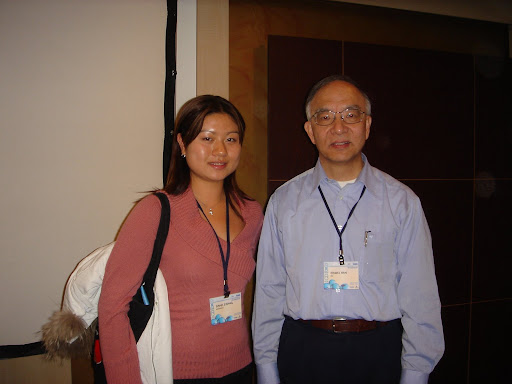 Just before Easter, I was notified my submission to CSIIRW '10, 6th Annual Cyber Security and Information Intelligence Research Workshop was accepted. After funding was approved with less than 2 weeks before the start of the workshop, organising travel from Australia to the United States was a bit hectic. But I'm pleased to say, everything worked out and after over 20 hours of flying, I am here in Tennessee.
Just before Easter, I was notified my submission to CSIIRW '10, 6th Annual Cyber Security and Information Intelligence Research Workshop was accepted. After funding was approved with less than 2 weeks before the start of the workshop, organising travel from Australia to the United States was a bit hectic. But I'm pleased to say, everything worked out and after over 20 hours of flying, I am here in Tennessee.Location: The workshop itself is held at Oak Ridge National Laboratory, a national research centre with an interesting history. Initially established in 1943, ORNL was part of the secret Manhattan project to pioneer a method for producing and separating plutonium. Apparently I'm sitting near a nuclear reactor right now? The laboratory is in Oak Ridge, where the whole town seems to have been built in support of the research laboratories in the area.
Currently, the lab facilitates six major areas of research: neutron science, energy, high-performance computing, systems biology, materials science at the nanoscale and national security. The workshop that I will be presenting at falls under national security. But while attendees were at ORNL, they had the opportunity to take a tour around the facilities and have a look at both the Jaguar and the Kraken, the first and third fastest supercomputers in the world. We were also shown the type of simulations the computers ran to support the research performed by other parts of the laboratory. Very amazing indeed. Feel free to read up more about the research lab on their official website: http://www.ornl.gov/
Content: As the title of the workshop suggests, the focus was on Cyber Security and Information Security. The plenary speakers spoke on a range of issues including national security, system security and web security. Keynote bios can be found here: http://www.ioc.ornl.gov/csiirw/keynotebios.html. As some of these areas hasn't been the primary focus of my research in the past several years, it raised very many interesting issues that I had not considered. What is the strategy that should be taken to make security less beneficial to the "bad guys" and in more favour of the "good guys"? An aikido approach to redirect threats can be taken; use the force of the attacker to beat them at their own game. We should be making detection systems online and capable of analysing larger volumes of data. Design for failure and have a recovery plan! The keynote speakers really made this conference for me.
The paper sessions looked at design, malware, network, privacy and metrics, enterprise, survivability, formal methods and trust. Most times I had difficulty deciding which room to go to. I usually ended up in the network/malware stream, listening to malware classification, and any sort of categorisations that used data mining tools.
There were also some interesting posters out in the lobby area, available to be read at your leisure during the entire event.
My Work: The paper I had accepted and presented this morning was titled: Graph Based Strategies to Role Engineering. It's the foundations of my current research in graph based role engineering for definition of a set of roles that accurately reflect the internal functionalities of an enterprise for RBAC. To identify the roles, we first map users, permissions and roles to nodes and user-to-permission, user-to-role, role-to-role and role-to-permission assignments to edges in a directed acyclic graph (DAG). There are three graphs:
 UPGraph |  URPGraph |  UHRPGraph |
There are three different cost models:
Role minimisation: cost(G)= c1|VR|
Edge minimisation: cost(G)= c2|E|
Role and Edge minimisation: cost(G)= c1|VR| + c2|E|
where cx are the static costs of role and assignment administration, |VR| is the number of role nodes in the graph and |E| is the number of edges in the graph.
Using both the graph model and the cost metrics, we propose a heuristic strategy for optimisation. Please check the paper for more details on the heuristic and some preliminary results.
 |  |  |






